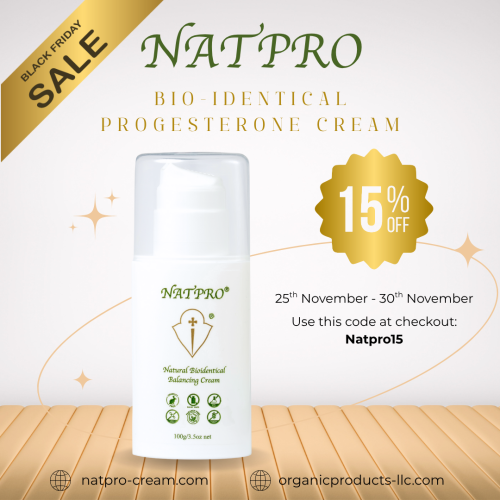List of inflammatory diseases
A comprehensive list of inflammatory diseases would run to over 100, each of which have high levels of inflammation in the connective tissues, or degeneration of these tissues. These include...
- Alzheimer's
- ankylosing spondylitis
- arthritis (osteoarthritis, rheumatoid arthritis (RA), psoriatic arthritis)
- asthma
- atherosclerosis
- Crohn's disease
- colitis
- dermatitis
- diverticulitis
- fibromyalgia
- hepatitis
- irritable bowel syndrome (IBS)
- systemic lupus erythematous (SLE)
- nephritis
- Parkinson's disease
- ulcerative colitis
Inflammation is the end result of long term oxidative stress. The stress can be caused by emotional or physical trauma, and nutritional or environmental pollutants. In most cases it is something of everything.
Interestingly the incidence of atherosclerosis, heart attack and stroke is greatly increased in RA, these are also due to oxidative stress.
The question is what has caused the oxidative stress. Food is a major culprit, sugar being the number one culprit as it causes glycation. Sugar in any form, ie starchy carbohydrates like potatoes, legumes, sweet fruit or root vegetables, sugar in drinks, sauces, tinned food etc., and in particular grains and anything made from them such as bread, cakes, biscuits, pasta etc. These all convert to glucose.
Glycation occurs when a sugar molecule binds to a protein or lipid molecule without the control of an enzyme. This impairs the function of the molecule, leading to advanced glycation end products (AGEs), resulting in many of our inflammatory diseases. AGE's are particularly high in diabetes.
Physical or mental stress also causes oxidation.
Markers for inflammatory diseases are...
- low reduced glutathione (GSH) levels
- low vitamin D and other antioxidants
- high oxidised glutathione (GSSG) levels
- high malondialdehyde (a marker for oxidative stress, formed when fats are oxidised)
- increased lipid peroxidation
- high homocysteine
- high CRP
- high fructosamine
- isoprostanes (a marker for oxidative stress, formed when fats are oxidised)
Factors that cause inflammation...
- oxidative stress, due to decreased levels of antioxidants, in particular vitamin D, glutathione and superoxide dismutase
- an increase in sugar and foods which convert to glucose
- decreased selenium levels, selenium is needed for the production of glutathione
- increased oestrogen levels, oestrogen is an excitatory, inflammatory hormone
- decreased zinc and increased copper. Oestrogen suppresses zinc and progesterone, and increases copper. Copper suppresses progesterone and zinc. Supplementing with progesterone and zinc raises levels, and suppresses the excess copper and oestrogen
- a high level of matrix metalloproteinases (MMPs), these enzymes break down protein causing a pathological reaction such as inflammation and tissue degeneration when in excess
- excess oestrogen stimulates matrix metalloproteinases, it also accelerates the ageing of collagen
- a lack of progesterone, this is always low in inflammatory diseases. Progesterone suppresses MMPs and oestrogen
- a predominance of the inflammatory Th1 cytokines over the anti-inflammatory Th2 cytokines. Progesterone stimulates the Th2 response, so does vitamin D
- emotional stress. Progesterone, and it's potent metabolite allopregnanolone calm by activating the GABA receptor sites, GABA is one of the most calming neurotransmitters
- allergies to certain foods. Oestrogen increases the response to allergens, progesterone inhibits mast cells, responsible for the increase in histamine
- a high level of advanced glycation endproducts (AGEs)
- environmental pollutants
- a high level of tumour necrosis factor-alpha. Progesterone suppresses TNF-alpha, as does vitamin D
- a high level of prolactin, an inflammatory hormone. Progesterone suppresses prolactin, so does the amino acid tyrosine
- increased levels of fructosamine, a sign of insulin resistance
- increased levels of homocysteine
- a high level of pro-inflammatory HDLs, leading to increased lipid peroxidation. Progesterone protects against lipid peroxidation, as does vitamin D
- a deficiency of the essential fatty acid Omega 3
- decreased levels of vitamins B2, C, E and beta-carotene
The list of inflammatory diseases, and autoimmune diseases, occur far more frequently in women than men. With the exception of ankylosing spondylitis which occurs at a ratio of 3:1 in men. The ratios of the other inflammatory disorders occurs at a frequency up to 9:1 in women.
It is estimated that autoimmune diseases affects approximately 8% of the population, 78% of these are women. The greatest differences are found in fibromyalgia, scleroderma, SLE and Sjogren's syndrome, where a rate of almost 9:1 is found in women.
About 1% of the worlds population have rheumatoid arthritis. Its predominantly found in women, who have three to five times the likelihood of getting it than men. Although it can occur at any age, more often than not it occurs between the ages of 20 to 60.
In women it frequently begins during peri-menopause, i.e., between the ages of 40-50, with symptoms typical of oestrogen excess: general aches and stiffness, pain in the joints, fatigue and difficulty sleeping. Many find their symptoms increase just before menstruation when the progesterone level is low.
There is a predominance of the inflammatory Th1 cytokines over the anti-inflammatory Th2 cytokines in inflammatory disorders. Progesterone stimulates the Th2 cytokines, so pregnancy improves symptoms in 75% of RA cases. Progesterone levels rise greatly during pregnancy, particularly in the third trimester, when symptoms in SLE patients abate too.
Its tempting to speculate the remaining 25% do not get relief as their progesterone level was too low. An interesting corollary to this is that 90% of cases relapse within six months after giving birth, highest within the first three months. Progesterone levels fall sharply after birth.
Prolactin, the hormone governing milk production, rises after birth. Prolactin is an inflammatory hormone, it stimulates the immune response and is elevated in both male and female RA patients. Progesterone suppresses prolactin production.
Studies have found a progesterone deficiency in females with thyroid and ovarian autoimmune diseases. They have also found both progesterone and androgens were significantly lower during the luteal phase in RA patients. A rare case of systemic lupus erythematosus (SLE) occurred in a transgender man, who was given feminising hormones (oestrogen).
MMPs play a role in tissue remodelling by breaking down protein. But they are implicated in a number of inflammatory disorders, and are involved in the destruction of connective tissues when in excess. This results is a pathological reaction which can lead to rheumatoid and osteo-arthritis, cirrhosis, metastasis, cancer and excessive bleeding in the uterus. Oestrogen stimulates production, progesterone suppresses MMPs.
Treatment
Natural
Oxidative stress is evident, hence the inflammation, its imperative this is reversed before long term damage occurs. High dose antioxidants should be taken, progesterone should be considered too, and foods containing sugar or convert to glucose should be avoided.
Progesterone is a potent anti-inflammatory and antioxidant, it's neuroprotective, it prevents lipid peroxidation and confers vascular protection. Both the endogenous steroid cortisol and the widely prescribed glucocorticoid prednisolone, increases cholesteryl ester (CE) formation, leading to atherosclerosis, progesterone blocks this increase.
As an anti-inflammatory agent, progesterone has been shown to reduce the response of natural killer cells, the Th1 cytokine response, as well as other known initiators of inflammation. Progesterone suppresses oestrogen, which is an excitatory hormone, a known initiator of inflammation.
Progesterone stimulates the production of IL-4 and IL-10, anti-inflammatory agents.
Progesterone increases levels of reduced glutathione and superoxide dismutase.
Progesterone is a natural inhibitor of MMPs, whereas oestrogen maintains secretion of matrix metalloproteinases.
Tumor necrosis factor-alpha is an inflammatory cytokine involved in the acute phase reaction in arthritis. Progesterone decreases both intracellular and secreted TNF-alpha.
Oxidative stress is behind all forms of inflammation due to low levels of antioxidants, these should be increased. In particular vitamin D and the amino acid N-acetyl cysteine.
Vitamin D and glutathione are our most important endogenous antioxidants. Glutathione is a tri-peptide comprising the amino acids cysteine, glycine and glutamine, the latter two are usually found in abundance in food, cysteine is not. But if under stress, glutamine becomes a conditionally essential amino acid and supplementing is advisable. Cysteine also chelates any excess copper and other environmental toxins.
Selenium is an important addition, as its presence is needed by the enzyme glutathione peroxidase, to catalyse glutathione.
An increased oxidised glutathione (GSSG) to reduced glutathione (GSH) ratio is considered an indication of oxidative stress. Oxidative injury occurs in Traumatic Brain Injury victims. Excess glutamate collects at the synapses, which prevents the uptake of cysteine necessary for glutathione production.
Glutamate is also an excitatory amino acid, the last thing a TBI victims needs. Progesterone is a potent anti-inflammatory, used successfully in TBI studies. Plus it increases glutathione levels. A lack of vitamin D has been found to reduce the benefits of progesterone.
Alpha lipoic acid and silymarin, the active ingredient in milk thistle, have been shown to increase glutathione levels.
If emotional stress is experienced, progesterone is an excellent addition as it activates the GABA receptor sites. This is an amino acid and also one of our most calming neurotransmitters. GABA itself is difficult to use, too much and symptoms return, its far easier to use progesterone.
Taurine is another calming neurotransmitter, a powerful antioxidant, a sulphur amino acid like cysteine, it is also vital for the immune system, this should be considered too. A high level is found in all tissues subject to a high level of oxidation, such as the heart, eyes and liver.
If prolactin is high progesterone suppresses it, so too does the amino acid tyrosine. Consider taking it.
Insulin resistance should be checked for. If this is present it should be reversed, see Insulin Resistance.
If a high homocysteine level is found vitamins B2, B6, B12, folic acid, tri-methyl glycine and zinc should be taken.
Vitamin D is essential for health, have a blood test done to check the level. The test should only be done for 25-hydroxyvitamin D, also called calcidiol.
30-50% of people have a deficiency, particularly those living in climates with little sun, living above 32 degrees north or south of the equator, work in doors and spend little time in the sun.
For more info on vitamin D levels, testing etc see...
GrassrootsHealth
Birmingham Hospital
Vitamin D Links
Blood levels should be 70-100ng/ml or 175-250nmol/L and not the 30ng/ml or 75nmol/L most labs and doctors regard as adequate. The minimum daily dose should be 5000iu's per day, although the latest research indicates it should be 10,000iu's per day, see here.
Additional information
Progesterone
The amount to use will be dependant on the individual and the severity of the problem. Women should use between 100-200mg of progesterone daily, men should use between 10-100mg/day. In severe cases more might be needed, vary the amount used following symptoms as a guide. Rubbing progesterone cream directly onto arthritis affected joints has helped many sufferers.
For more information see the pages on...
How to use progesterone cream
Peri-menopause
Menopause
Before using progesterone it's essential to first read the page on Oestrogen Dominance.
For information on food see Nutrition and Diet.
The following should be tested for...
- Vitamin D
- progesterone
- oestradiol
- prolactin
- copper and zinc levels
- the GSSG:GSH ratio
- CRP (a marker for inflammation)
- homocysteine
- malondialdehyde (a marker for inflammation)
- isoprostanes
- insulin resistance
For more information see..
Conventional treatment for the list of inflammatory diseases
The following drugs are given for inflammatory disorders...
 Are you struggling with irregular cycles, unwanted hair growth, or unexplained fatigue? You’re not alone. Polycystic Ovarian Syndrome (PCOS) affects up to 10% of women of reproductive age—and many mor…
Are you struggling with irregular cycles, unwanted hair growth, or unexplained fatigue? You’re not alone. Polycystic Ovarian Syndrome (PCOS) affects up to 10% of women of reproductive age—and many mor… While progesterone is often discussed in relation to reproductive health, emerging research reveals its remarkable role in supporting brain function and protecting against neurological decline. Proges…
While progesterone is often discussed in relation to reproductive health, emerging research reveals its remarkable role in supporting brain function and protecting against neurological decline. Proges… Incase you missed it!
Today is the last day for you to claim 15% off our Natpro 100ml Dispensers. The sale ends at midnight tonight.
How to Claim Your 15% Discount:
•Shop at
Incase you missed it!
Today is the last day for you to claim 15% off our Natpro 100ml Dispensers. The sale ends at midnight tonight.
How to Claim Your 15% Discount:
•Shop at  To all our valued customers, We’ve heard your requests for more flexibility with payment options and clearer access to usage and dosage instructions, and so we’re delighted to announce the launch of o…
To all our valued customers, We’ve heard your requests for more flexibility with payment options and clearer access to usage and dosage instructions, and so we’re delighted to announce the launch of o…